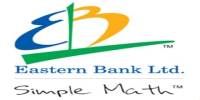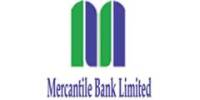General Financial Management and Performance Evaluation of
Square Toiletries Limited
Square Toiletries Ltd. (STL) is one of the largest and leading “Fast Moving Consumer Goods” company in Bangladesh. This report provides an in-depth analysis and interpretation of “General Financial Management and Performance Evaluation of Square Toiletries Limited”. It consists of the job responsibilities I was given during my internship in the Finance and Accounts department of STL. A detail about my critical observation is given about the way they record their daily transactions with their third parties, the way the measure their production workers performance, and also how they maintain good relationship with their retailers through winter gift promotional campaign. Then I also gave a description about my critical observation about the activities of STL including my recommendation to change some of their monitoring processes to increase revenue. Also, a detailed explanation of the profitability, liquidity and financial stability of STL over the last five years and its financial performance is compared to that of its competitor, Kohinoor Chemical Company Limited (KCCL). This is done through liquidity, solvency, activity and profitability ratios. All these calculations were done with the help of balance sheet and income statement of STL for the last five years. For KCCL, the calculations of ratios were done for the year 2014. Results of ratios are also discussed to evaluate STL’s overall performance and remedial actions are also given to overcome any major area of weaknesses.
Objectives of the study
General Objective:
The objective of the study is to focus on one broad issue that is “General Financial Management of Square Toiletries Limited”. This paper also covers some other factors related to the finance and accounts functions of STL and its importance which mentioned in the specific objectives below:
Specific Objectives:
- To know about the financial management of Square Toiletries Limited.
- To know about the company’s mission, vision, objectives, values and principles.
- To know about the different brands of STL.
- To have a practical idea about the operations of finance and accounts department of STL.
- To analyze the strengths and weaknesses of the financial management of STL.
- To assess the performance of STL compared to its competitor, Kohinoor Chemicals Limited, through analyzing financial ratios.
Company Profile:
Square Toiletries Ltd. is a part of the highly renowned local conglomerate in Bangladesh- Square Group. It is one of the largest and leading FMCG company in Bangladesh with a turnover of USD 75 million. With their relentless innovation, STL is the pioneer for bringing in new products and packaging concepts in Bangladesh. They have gained the expertise and eagerness in fulfilling customers expectations with their quality product ranges through utmost sincerity. STL consider people as unique in terms of their needs, and to satisfy individual needs, they always try to maintain consistent quality of their unique products. Only for their customers, they are relentlessly striving to be “as unique as you”.
Currently, STL is carrying out its production in its two fully automated plants at Rupshi and Pabna. With their high-tech production facilities, most advanced equipment, and high quality raw materials, they ensure the absolute best for their customers. STL has product specific machinery to cater to different products, formulation, and packaging and a group of well-trained people are always present to ensure smooth operations of all the machines. Imported from various foreign suppliers, the best quality raw materials are used for all STL products. Each phase of the production process undergoes rigorous testing to meet international standards, following the GMP (Good Manufacturing Practice) of production.
Square Toiletries Ltd. has a strong R&D department which is committed towards developing new products and improving existing products. The international standard products of Square Toiletries Ltd. meet the needs of Bangladeshi people as well as the people abroad. Therefore, the main objectives of R&D are –
- A deep understanding of consumers, their habits, and product needs.
- Capabilities to acquire, develop, and apply technology across STL’s broad array of product categories.
- The ability to make “connections” between consumers’ wants and what technology can deliver.
STL has a vision which says “We attempt to understand the unique needs of the consumer and translate that needs into products which satisfies them in the form of quality products, high level of service and affordable price range in a unique way.”
To attain their vision, they took a strong mission into consideration which is given below:
- To treasure consumer understanding as one of our most valued assets and thereby exerting every effort to understand consumers’ dynamic requirements to enable us in offering maximum satisfaction.
- To offer consumer products at affordable price by strictly maintaining uncompromising stance with quality. With continuous R&D and innovation we strive to make our products complying with international quality standards.
- To maintain a congenial working environment to build and develop the core asset of STL – its people. As well as to pursue for high level of employee motivation and satisfaction.
- To sincerely uphold the responsibility towards the government and society with utmost ethical standards as well as make every effort for a social order devoid of malpractices, anti-environmental behaviors, unethical and corruptive dealings.
With a vision to maintain this level of quality consistency and in a pursuit to consistently deliver quality products to their consumer, STL have also developed technical partnership with companies such as Cognis (Germany), Uniqema (Malaysia), Clarient (Germany), IFF (UK) and many more.
With their relentless effort to deliver “unique” quality products and to stay competitive in the consumers mindset, they keep on bringing several brands by using high-tech production facilities and through quality conformance. Through this effort, they are gradually becoming a high performance local as well as a global player.
REASON BEHING CHOOSING KOHINOOR CHEMICAL COMPANY LIMITED AS A COMPETITOR OF SQUARE TOILETRIES LIMITED
Kohinoor Chemical Company Limited (KCCL) is well-known by its most popular product “Tibet”. They are the pioneer amongst the soap, cosmetics and toiletries manufacturing industries of Bangladesh, producing highly value-added products. They are quality-focused.

This is because KCCL is considered to be the direct competitor of STL. Therefore, I have I have chosen this company for evaluating STL’s performance with one of its competitor (KCCL) for peer analysis.
From the above table, we can see that Kohinoor Chemical Company Limited (KCCL) is a direct competitor of Square Toiletries Limited (STL). This is because STL has almost all the brands that are provided by KCCL. However, the number of products that are offered by STL under each brands are much higher than the products provided by KCCL under each brands.
SWOT AND TWOS ANALYSIS
SWOT Analysis
Strengths:
- Recognized as a renowned local Company:
STL is a part of the well-known local conglomerate- Square Group with its presence nationwide. It has a local footprint combined with top of the mind brand recall among consumers worldwide.
- Strong brand portfolio:
It has a deep and broad portfolio of brands and a diversified product range, which makes it uniquely, positioned to the top among consumer preferences across the country.
- Borrowing from sister concern:
Square Group is known to be the largest local conglomerate in Bangladesh. Each business unit can borrow money from their sister concern. This in turn reduces the risk of bankruptcy which would have occurred if the business units borrowed money from the banks.
- Strong relationship with retailers:
STL has established a very strong relationship with retailers by offering them good margins and incentives, which is very important for a company to stay competitive in the consumer market. This provides STL with a strength to reach the ultimate consumers. For example, every year, Square Toiletries Limited arranges an event “Jeteo Paren, Peteo Paren” where retailers are awarded upon their contribution of winter gift promotional campaign which runs from October 15th to December 22nd of every year. This way they maintain good relationship with customers.
- Economies of scale:
Economies of scale occur when increased output leads to lower long run average costs. Because of STL’s mass scale production, it has ability to overcome the bargaining power of suppliers which results in lower cost of production.
- Research and development:
STL is an innovative company and investing a huge sum on research and development of new products and brands. STL has product specific machinery to cater to different products, formulation, and packaging. It undergoes rigorous testing to meet international standards, following the GMP (Good Manufacturing Practice) of production. Because of this ability STL has created high entry barriers for new entrants.
Weaknesses:
- Huge Competition and substitutes:
The biggest weakness that STL faces is that it operates in an competitive market where other companies like Kohinoor Chemicals, ACI and Unilever are present and therefore poses a challenge in its dominance at every turn and tremendously try to raise their portion in the FMCG (Fast Moving Consumer Goods) space. Because of this huge competition, the products of STL can be easily replaced with substitutes.
- No direct connecting with customers:
Because of nature of business, STL has no direct connection to its ultimate consumers. It has to rely on its wholesalers and retailers. If they have a bad relationship with their retailers, retailers may not encourage the ultimate consumers to buy STL products. This would eventually hurt their sales.
- Inefficient organizational management:
Since Square Group is a big local conglomerate, their management process is extremely flexible. A lot of bureaucracy therefore arises which creates a huge problem in the organization.
Opportunities
- Economic Crisis:
Due to political instability, many small companies with liquidity problems had to find way for exit. This has created opportunities for STL because they were able to get their market share through their efficient distribution methods and hence get more customer base.
- Increasing need for healthy products:
Consumers are more aware today and prefer healthy products, so it is a good opportunity for STL to introduce more healthy and safe products under its product segment “Health and Hygiene” to increase its market share and knock out its competitors.
- Major profitable brands:
Some of the major brands of STL are Jui, Chaka, Senora, Magic and Meril Protective Care which derives the maximum sales. These brands should be in the priority area for creation of future sales growth and sustaining profits from increasing raw material costs.
- Increase in Exports:
Already STL is exporting to 13 countries including Germany, UK, Australia, Malaysia, UAE, etc. They are successful in it because Square Toiletries Limited (STL) is an ISO 9001: 2000 certified company. Therefore, with this quality standard they are trusted by the foreign people and therefore in future they can increase their exports in order to earn more sales revenue.
Threats:
- Strong Competition:
There are other multinational organizations like Unilever who are also capturing a major portion of market share. These competitors always try to give tough time to STL and try to create high entry barriers to new and emerging markets.
- Tougher Business Climate:
With increasing economic crisis, strong government regulations and competitive environment, business environment is getting tougher. It has led the companies to focus more their liquidity instead of profitability.
- Complex Organizational Structure:
Square Group has more than 20 group companies, one of them is STL. STL alone has two factories for its production processes. All this has made the structure of Square Group extremely complex. A wrong corporate strategy can be a major cause of business failure.
TWOS Analysis:
Strategies that use strengths to maximize opportunities:
(Strength 01- Opportunity 02)
Since STL is a renowned company, their products are mostly considered to be among the top preferences in the consumer’s mindset. With this strength, they can maximize their opportunity of bringing out more safe and healthy products as people are becoming more health and beauty conscious. This is because people are more likely to buy their new products as they trust STL products. Therefore, there is a high chance of increasing their sales revenue.
(Strength 04- Opportunity 03)
STL has established a very strong relationship with retailers by offering them good margins and incentives, which is very important for a company to capture the consumer market. Because retailers are the ones who comes in direct contact with the customers, STL can maximize their opportunity by encouraging retailers to sell more of their profitable brands to customers. This would eventually increase their future sales growth.
Strategies that use strengths to minimize threats:
(Strength 03- Threat 02)
Square Group has more than 20 sister concern operating under this group. Each business unit can borrow money from their sister concern. This in turn reduces the risk of bankruptcy and hence ensures liquidity of cash. With this strength, they can minimize the threat of making the business environment more sustainable for them so that they do not have to exit. For this reason, they need more liquidity than profitability to stay in this business. They can borrow from their sister concern without less obligations than they would have to face when borrowing from banks.
Strategies that minimize weaknesses by taking advantage of opportunities:
(Weakness 01- Opportunity 04)
STL is successfully exporting to 13 countries including Germany, UK, Australia, Malaysia, UAE, and many more because Square Toiletries Limited (STL) is an ISO 9001: 2000 certified company which indicates that they maintain strict quality measure. By taking advantage of this opportunity, they can find an alternative to lessen the impact of the risk of facing huge competition in the local market. They can increase their exports to more foreign countries where they can get a huge market base. Therefore, this would help to increase their sales which might not have recovered with their sales in the local market.
Strategies that minimize weaknesses and avoid threats:
(Weakness 03- Threat 03)
Since Square Group is a big local conglomerate with more than 20 group companies operating under it, it faces bureaucracy in their management process. To minimize this weakness in order to avoid upcoming threats, their corporate strategy needs to be strengthen to make sure each business units are efficiently monitored and hence the chance of business failure would reduce.
Performance evaluation of Square Toiletries Limited
Liquidity Ratios:

Interpretation:
Current Ratio:
Current ratio (also known as working capital ratio) measures the short-term solvency (debt paying ability when they become due) position of a business. The higher the current ratio is, the more capable the company is to pay its obligations if a large portion of its current assets consists of highly liquid assets. From the table above, it is seen that in 2014, STL’s current assets were 1.08 times higher than its current liabilities. The graph of current ratio also shows an decreasing trend over the years except the last two years. Compared to Kohinoor Chemical Company Limited (KCCL). STL is below KCL and therefore we can interpret that STL has an unfavorable current ratio.
Quick Ratio:
The quick ratio measures a company’s ability to meet its short-term obligations with its most liquid assets (ready sources of immediate cash). For this reason, the ratio excludes inventories from current assets, The higher the quick ratio, the better the company’s liquidity position.
Higher quick ratio is needed when the company has difficulty borrowing on short-term bank loans. From the table above, it is seen that in 2014, STL has Tk. 0.43 of liquid assets to cover each Tk.1 of current liabilities. The graph of quick ratio also shows a fluctuating trend over the years. Compared to KCL, STL is slightly above KCL and therefore we can interpret that STL has a favorable quick ratio.

Asset Management Ratio

Interpretation:
Inventory Turnover Ratio:
The inventory turnover ratio is an efficiency ratio that shows how effectively inventory is managed by comparing cost of goods sold with average inventory for a period. This measures how many times average inventory is “turned” or sold during a period. A higher inventory turnover shows that the company can effectively sell the inventory it buys and does not wastes resources by storing non-salable inventory and therefore ensures better liquidity. From the table above, it is seen that in 2014, STL’s inventory turnover was 4 times in that particular year. The graph also shows a fluctuating trend of inventory turnover over the years. Compared to KCL, STL’s inventory turnover is higher than that of KCL. Therefore, STL has a favorable inventory turnover ratio.
Profitability Ratio:

Interpretation:
Gross Profit Margin:
Gross profit margin measures company’s manufacturing and distribution efficiency during the production process in terms of selling its inventory or merchandise. This is the pure profit from the sale of inventory that can go to paying operating expenses. The higher the gross margin, the higher the ability of the company to pay its operating and other expenses and build for the future.
From the table above, we can see that in 2014, STL’s gross profit margin was 25.57%. This means that after STL pays off its inventory costs, it still has 25.57 percent of its sales revenue to cover its operating costs. The graph also shows a decreasing trend of gross profit margin over the years. Compared to KCL, STL’s gross profit margin is above than that of KCL. Therefore, STL has a favorable gross profit margin.
Recommendations:
Improving Liquidity Ratios:
From the liquidity ratios, both the current and quick ratio shows a declining trend in the year 2014. This has to be improved because lower the value of current ratio, lower is the margin of safety that the company possesses to cover short-term obligations. However, current ratio may provide a misleading indication of a company’s liquidity position because the quality of each individual asset is not taken into account while computing this ratio. This means that a company with high current ratio may not always be able to pay its current liabilities as they become due if a large portion of its current assets consists of slow moving or obsolete inventories (illiquid).
Therefore, quick ratio needs to be given more importance because it considers only the most liquid assets and gives a true indication of liquidity.
Improving Asset-Management Ratios:
Inventory Turnover ratio shows a declining trend in the year 2014. This is bad for the company because a low inventory turnover ratio shows that raw materials tend to deteriorate as they sit in the warehouse idle and therefore poor sales. Low sales means that lower cost of goods sold. This might be due to lack of effective man-hour of the production workers which are not properly utilized or malfunctioning of the factory machines. Therefore, proper utilization of raw materials is required for high sales of finished goods and therefore for high inventory turnover ratio.
The accounts payable period of STL shows an increasing trend in the year 2014. This shows that STL is suffering from cash shortages and therefore takes more time to make payment to their creditors. This might be due to lower inventory turnover in the year 2014 where they could not generate enough sales due to idle raw materials. Therefore, their assets should be properly managed to generate sales so that STL does not face any cash problems for making payment. Also, it may deteriorate their reputation towards their suppliers which might hurt their sales in the long-run.
Total asset turnover ratios is seen to have a fluctuating trend over the years. The firm could be holding obsolete inventory and not selling inventory fast enough. With regard to accounts receivable, the firm’s collection period could be too long and credit accounts may be on the books too long. Fixed assets, such as plant and equipment, could be sitting idle instead of being used to their full capacity. All of these issues could lead to a fluctuating total asset turnover ratio.
Therefore, STL have to carefully manage their assets in order to have a high net sales throughout the years.
Financial Ratio do not reflect true measurement of Management Quality:
Financial ratios do not capture all of the important information that tells stakeholders how the business is doing today and helps them predict where it is going in the future. One of the key determinants of business success is the quality and experience of the management team. This information cannot be derived directly from financial ratios although large ratio difference can give an indication. Therefore, financial ratios do not indicate the real face of management quality.
Conclusion
Upon analyzing the general financial management of Square Toiletries Limited, it was seen that Square Toiletries Limited is the country’s leading manufacturer of international quality brand with huge number of diversified products. For effective sales management, STL follows the accrual-basis accounting and records it in their vouchers. Also analyzing their financial performance, we found out whether STL will stay solvent and remain in business. This was done by comparing ratios over time for same company and over time for the company compared with its peer group, KCCL. In most of the cases, their efficiency, solvency and activity ratios showed an increasing trend over the last five years while their liquidity ratios showed a fluctuating trend over the last five years. However, from the ratios it was seen that Liquidity and Asser- Management ratios need to be improved if the company wants to reduce their level of obligations. Finally, I can say that general financial management practice of Square Toiletries Limited is otherwise very efficient and the weaknesses are to be addressed with effective solution. This way Square Toiletries Limited can uphold its position as a business icon.
















